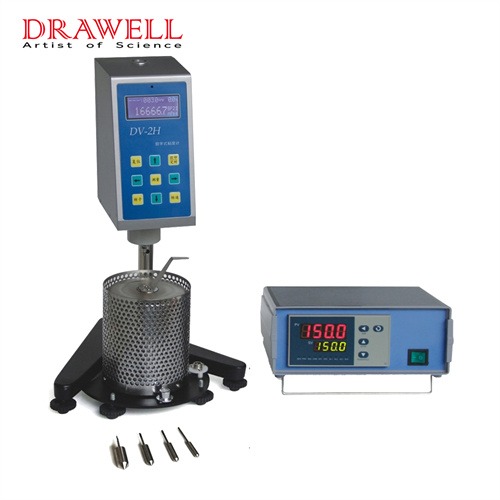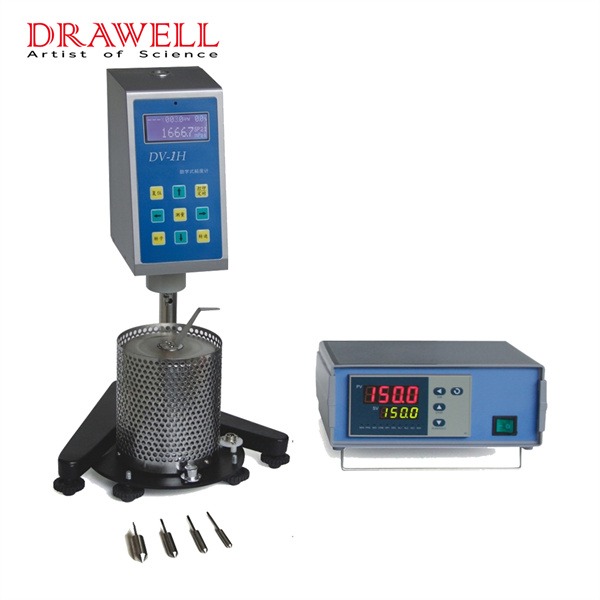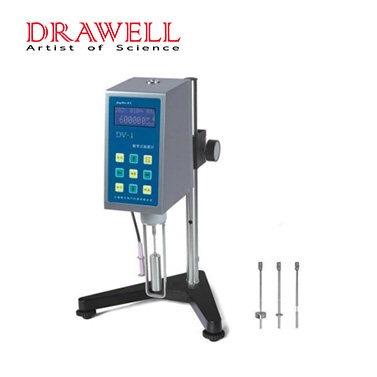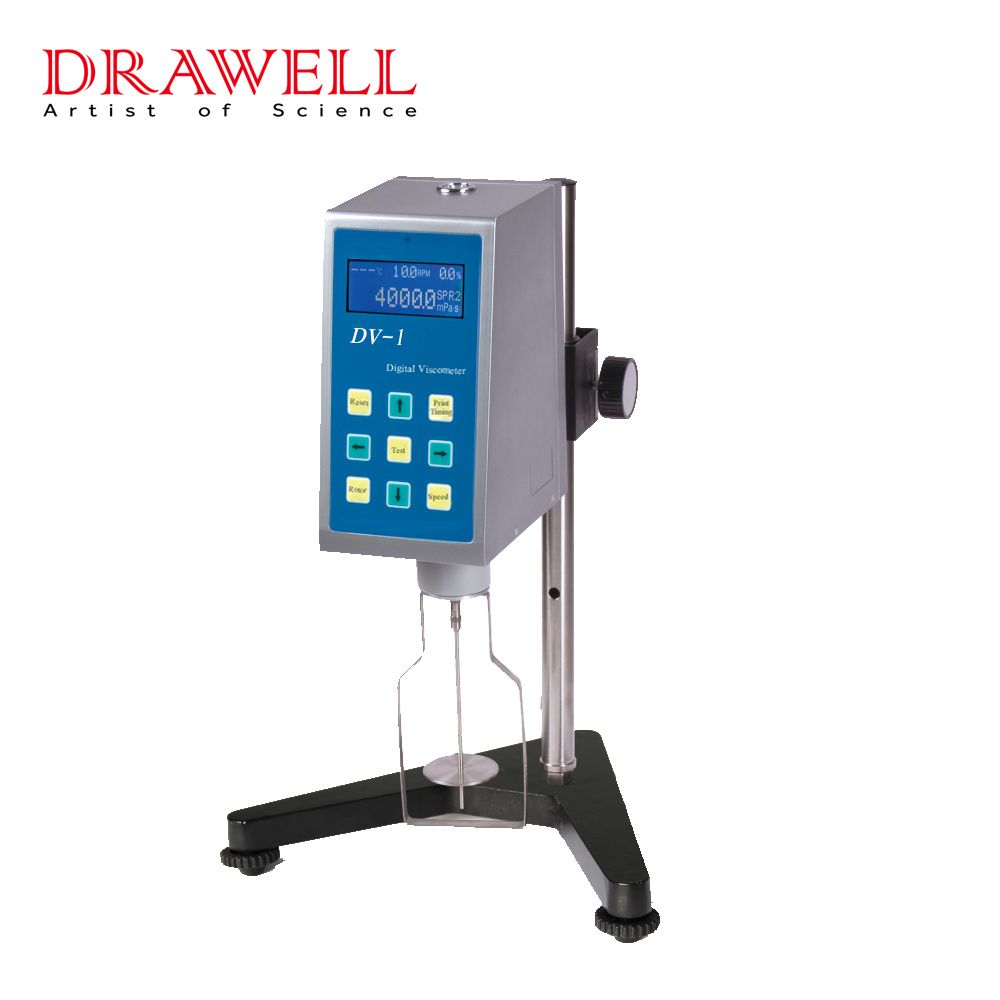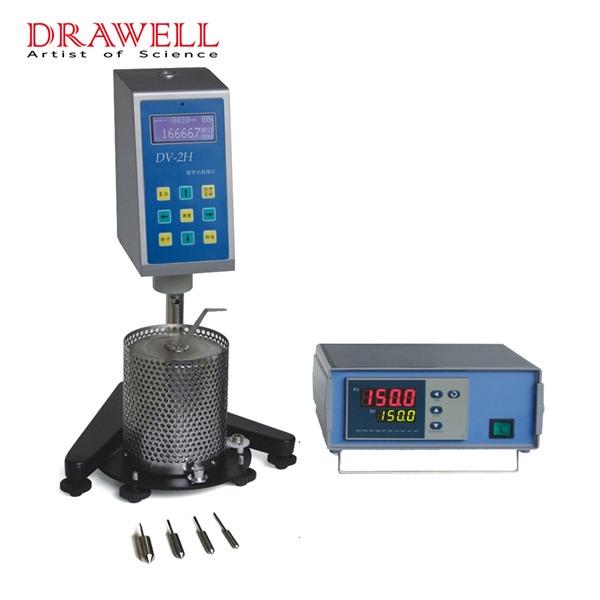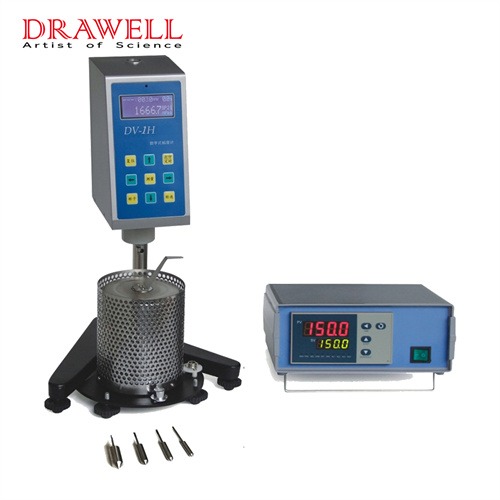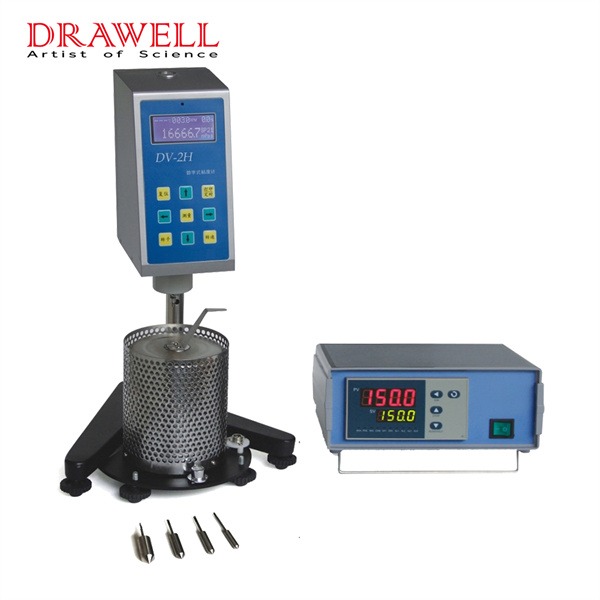Viscosity measurement is a critical aspect of quality control and process optimization in many industries, from pharmaceuticals to petrochemicals. As technology advances, digital viscometers have evolved from simple devices measuring a single parameter to sophisticated instruments capable of simultaneous multi-parameter measurement. This innovation is revolutionizing how industries approach viscosity measurement, offering unprecedented accuracy, efficiency, and comprehensive data analysis.
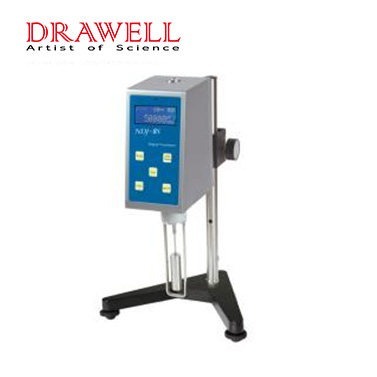
Why Using Digital Viscometers in Viscosity Measurement
Viscometers have evolved significantly from their mechanical origins. The classic instruments, such as the capillary or rotational viscometers, were often limited to measuring viscosity alone. These traditional devices, while reliable, required significant manual intervention and provided limited data, making the process time-consuming and prone to human error.
With the advent of digital technology, viscometers have seen remarkable improvements. Digital viscometers offer automated data collection, improved accuracy, and enhanced user interfaces. The most recent innovations in this field, however, go a step further by enabling the simultaneous measurement of multiple parameters, providing a comprehensive understanding of the fluid’s properties.
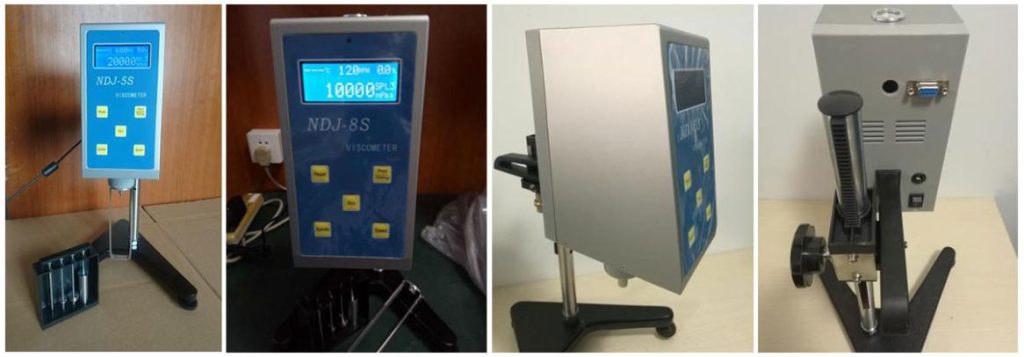
Advantages of Multi-Parameter Measurement Using Digital Viscometers
Modern viscometers are equipped with advanced sensors and sophisticated software, allowing them to measure viscosity, temperature, shear rate, density, and other crucial parameters all at once. This capability of digital viscometers offers several notable advantages.
1. Enhanced Accuracy
- Real-Time Adjustments: Simultaneous measurement of parameters such as temperature and viscosity allows for real-time adjustments. Temperature fluctuations can significantly impact viscosity readings. By measuring temperature concurrently, digital viscometers can automatically correct for these variations, ensuring more accurate viscosity data.
- Comprehensive Data Integration: By integrating multiple data points in a single test, these viscometers provide a holistic view of fluid properties, reducing the potential for errors that can arise when measurements are taken separately and at different times.
2. Improved Efficiency
- Streamlined Workflow: Multi-parameter measurement reduces the need for separate instruments and multiple tests, streamlining the workflow. This efficiency is particularly valuable in high-throughput environments, such as manufacturing and quality control laboratories, where time and accuracy are critical.
- Reduced Sample Volume: Fewer tests mean less sample is required overall, which is particularly advantageous when dealing with expensive or limited-availability materials. This efficiency in sample usage can lead to cost savings and more sustainable practices.
3. Comprehensive Data Analysis
- Detailed Fluid Behavior Insights: Simultaneously measuring parameters like shear rate, density, and temperature along with viscosity provides a detailed understanding of a fluid’s behavior under different conditions. This comprehensive data collection enables better product formulation and process optimization.
- Advanced Diagnostic Capabilities: With a wealth of data available from a single test, potential issues can be identified more quickly and accurately. This capability is crucial for troubleshooting and ensuring consistent quality in production processes.
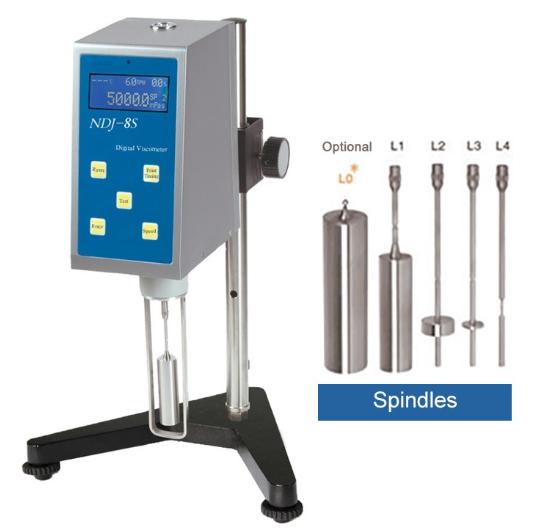
4. Automation and Connectivity
- Integration with Data Management Systems: Modern digital viscometers often come with connectivity features that facilitate integration with laboratory information management systems (LIMS) and other data management platforms. This automation enhances data handling efficiency and reduces the likelihood of human error.
- Remote Monitoring and Control: Connectivity also allows for remote monitoring and control, which is particularly useful in industrial settings where continuous quality control is required. Remote access can enable real-time adjustments and interventions, improving overall process management.
5. Industry-Specific Benefits
- Pharmaceuticals: In the pharmaceutical industry, precise control over viscosity is essential for drug formulation to ensure proper consistency and bioavailability. Multi-parameter viscometers provide detailed insights into the rheological properties of pharmaceutical products, aiding in the development of stable and effective medications.
- Food and Beverage: Viscosity influences the texture, mouthfeel, and stability of food products. Advanced viscometers help maintain desired quality and consistency, ensuring compliance with industry standards and consumer expectations.
- Petrochemicals: Viscosity affects the processing and performance of fuels and lubricants. Multi-parameter viscometers enable precise monitoring and control, leading to improved product performance and reduced production costs.
- Cosmetics: The texture and application properties of cosmetic products are heavily dependent on viscosity. Digital viscometers assist in developing formulations that meet consumer demands for feel and performance.
6. Sustainability and Cost Savings
- Resource Efficiency: By reducing the number of tests and the volume of samples required, multi-parameter viscometers contribute to more sustainable practices. This efficiency can lead to significant cost savings, particularly in industries where materials are expensive or scarce.
- Energy Conservation: More efficient testing processes also mean reduced energy consumption, contributing to lower operational costs and a smaller environmental footprint.
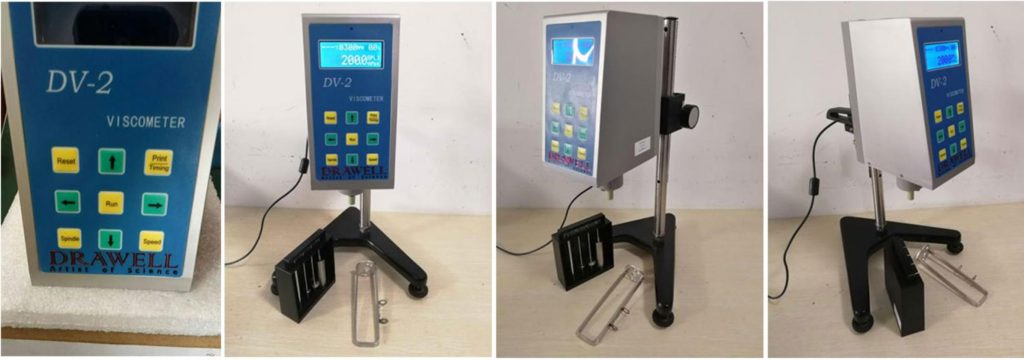
Future Directions of Multi-Parameter Measurement Using Digital Viscometers
The advent of digital viscometers capable of simultaneous multi-parameter measurement has already revolutionized fluid analysis in various industries. Looking ahead, several emerging trends and technologies promise to further enhance the capabilities and applications of these advanced instruments.
1. Integration with Artificial Intelligence (AI) and Machine Learning (ML)
- Predictive Analytics: AI and ML can analyze large datasets generated by multi-parameter viscometers to identify patterns and predict future behavior of fluids. This predictive capability can optimize production processes by anticipating changes in viscosity and other parameters, leading to proactive adjustments.
- Real-Time Process Control: Integrating AI with digital viscometers enables real-time process control. AI algorithms can continuously monitor data and make instant adjustments to maintain optimal conditions, improving product consistency and reducing waste.
2. Enhanced Sensor Technology
- Improved Sensitivity and Precision: Advancements in sensor technology will enhance the sensitivity and precision of viscometers, allowing for the detection of minute changes in fluid properties. This improvement is critical for applications requiring ultra-high precision, such as pharmaceuticals and biotechnology.
- Broader Measurement Range: Future viscometers will likely feature sensors capable of measuring a broader range of parameters, including those currently difficult to assess, such as chemical composition or microscopic particle interactions.
3. Internet of Things (IoT) Connectivity
- Remote Monitoring and Control: IoT connectivity will enable digital viscometers to be monitored and controlled remotely via the internet. This capability is particularly beneficial for large-scale industrial operations where continuous monitoring is essential for maintaining quality and efficiency.
- Data Integration and Management: IoT-enabled viscometers can seamlessly integrate with enterprise resource planning (ERP) and manufacturing execution systems (MES), facilitating better data management and real-time decision-making across the entire production chain.
4. Advanced Data Analytics and Visualization
- Enhanced Data Visualization: Advanced software will provide more sophisticated data visualization tools, allowing users to easily interpret complex data sets. Enhanced visualization aids in understanding fluid behavior and identifying trends that may not be immediately apparent from raw data.
- Comprehensive Reporting: Future digital viscometers will offer more robust reporting features, including customizable reports that can be tailored to specific industry needs. These reports will help in regulatory compliance and quality assurance documentation.
5. Portable and User-Friendly Designs
- Portability: The development of portable digital viscometers will expand their use beyond traditional laboratory settings. These portable devices will be valuable for field testing, on-site quality control, and applications in remote or harsh environments.
- Intuitive Interfaces: User-friendly interfaces with touchscreens and guided workflows will make advanced viscometry accessible to a broader range of users, including those without specialized training.
6. Sustainable and Eco-Friendly Technologies
- Energy Efficiency: Future viscometers will be designed with energy efficiency in mind, reducing the overall energy consumption of viscosity measurement processes. This reduction is essential for industries looking to minimize their environmental footprint.
- Reduced Sample Volumes and Waste: Innovations will continue to reduce the amount of sample required for testing, decreasing material waste and contributing to more sustainable laboratory practices.
7. Customizable and Application-Specific Solutions
- Tailored Solutions for Industry Needs: Manufacturers will develop digital viscometers tailored to the specific needs of different industries. For example, viscometers for the food industry might focus on texture analysis, while those for the chemical industry could emphasize the measurement of complex fluid interactions.
- Modular Designs: Future viscometers may feature modular designs, allowing users to add or upgrade sensors and components as needed. This flexibility will enable customization and scalability according to changing requirements.
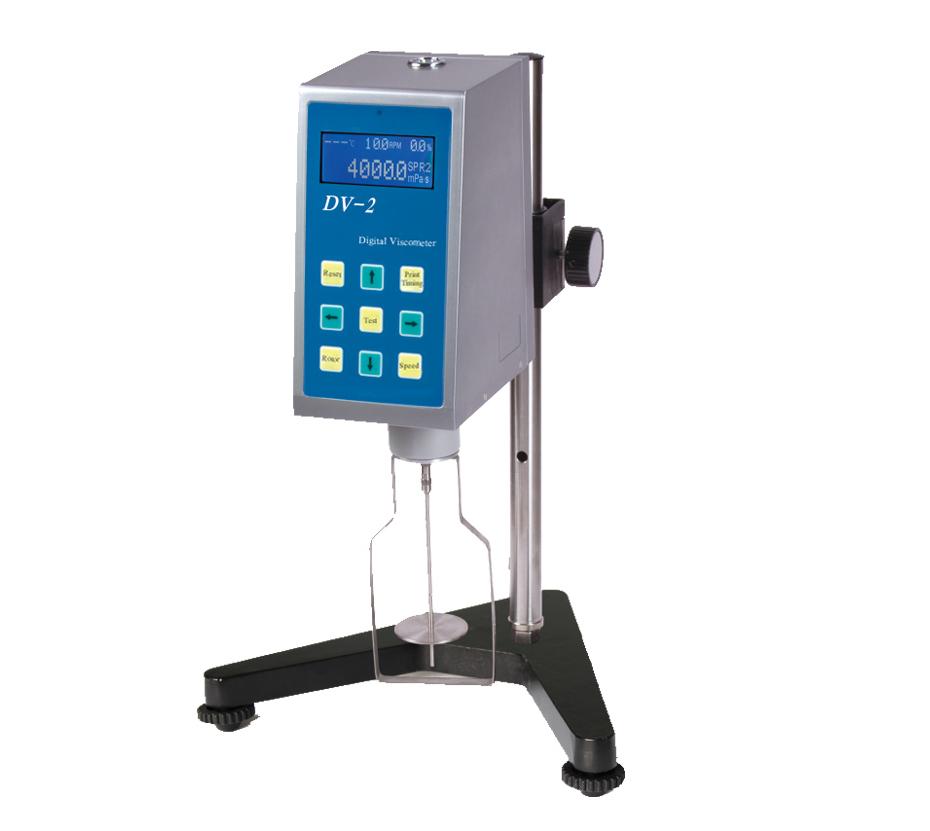
Conclusion
The trend towards digital viscometers capable of simultaneous multi-parameter measurement represents a significant advancement in viscometry. As technology continues to evolve, we can expect further enhancements in viscometer capabilities, driving even greater improvements in quality control and process optimization across various sectors.

